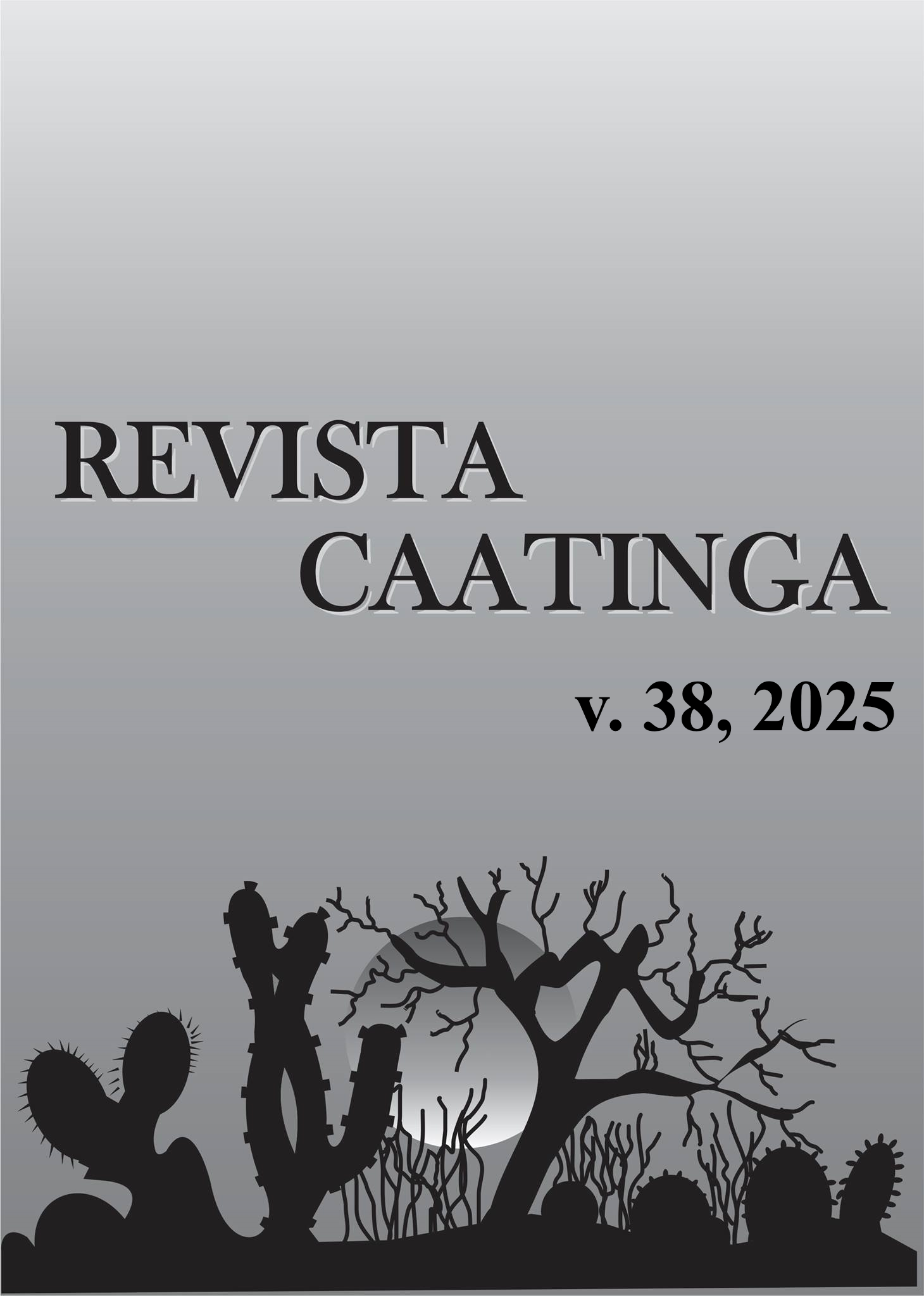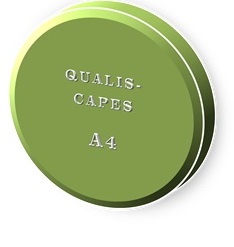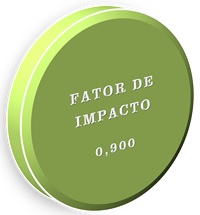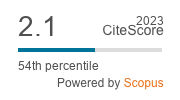Bioactivity of commercial botanical insecticides against Duponchelia fovealis (Lepidoptera: Crambidae)
DOI:
https://doi.org/10.1590/1983-21252025v3812806rcKeywords:
European pepper moth. Toxicity. Neem. Sophora flavescens. Sustainability.Abstract
Botanical insecticides have emerged as valuable tools for integrated pest management, offering particularly appealing ecological advantages in strawberry cultivation. Restrictions in the phytosanitary schedule pose challenges, such as controlling Duponchelia fovealis Zeller (Lepidoptera: Crambidae), a significant pest for this crop. This study aimed to evaluate the toxicity and lethal concentrations of two commercial botanical insecticides, one based on Sophora flavescens extract and the other on Azadirachta indica oil, against D. fovealis under laboratory conditions. Seven concentrations were tested for each botanical insecticide: S. flavescens extract (oxymatrine; Matrine®) at 6%, 4%, 2%, 1.5%, 1%, 0.75%, and 0.5%; and A. indica (azadirachtin; Fitoneem®) at 8%, 6%, 4%, 1.5%, 1%, 0.75%, and 0.5%). The synthetic insecticide chlorfenapyr (Pirate®) was used as a positive control (0.0104%, 0.0139%, 0.0186%, 0.0440%, 0.0587%, 0.0789%, and 0.1042%), while distilled water was used as a negative control. Topical applications were performed on third-instar larvae of D. fovealis to determine lethal concentrations through bioassays. The S. flavescens-based botanical insecticide exhibited the highest toxicity against D. fovealis, resulting in a mortality rate of 95.9% at a 6% concentration. A. indica at a 6% concentration resulted in a maximum mortality of 66.3%. The lethal concentrations (LC50 and LC90) observed were 1.97% and 5.84% for S. flavescens and 3.93% and 30.57% for A. indica, respectively. Therefore, the botanical insecticide based on S. flavescens extract shows high potential as an alternative for controlling D. fovealis, a significant pest in strawberry cultivation.
Downloads
References
ABBOTT, W. S. The value of the dry substitutes for liquid lime. Journal of Economic Entomology, 18: 265-267, 1925.
AFRAPOLI, F. M. et al. Susceptibility of Cydalima perspectalis (Lepidoptera: Crambidae) larvae to some reduced-risk insecticides in laboratory bioassays. Journal of Forest Science, 68: 253- 262, 2022.
ALANO, D. M. et al. Sublethal effects of insecticides used in strawberry on Trichogramma pretiosum (Hymenoptera: Trichogrammatidae). Spanish Journal of Agricultural Research, 19: e10SC01, 2021.
ARAUJO, E. S. et al. Combining biocontrol agents with different mechanisms of action to control Duponchelia fovealis, an invasive pest in South America. Crop Protection, 34: 105184, 2020.
ATAIDE, J. O. et al. Caracterização e atividade inseticida do óleo essencial de Zingiber officinale Roscoe - Zingiberaceae sobre Duponchelia fovealis Zeller, 1847 (Lepidoptera: Crambidae). Revista em Agronegócio e Meio Ambiente, 13: 693-705, 2020.
BERNARDI, D. et al. Eficiência e efeitos subletais de nim sobre Bonagota salubricola (Meyrick) (Lepidoptera: Tortricidae). Revista Brasileira de Fruticultura, 33: 412-419, 2011.
BRASIL. Ministério da Agricultura, Pecuária e Abastecimento. AGROFIT - sistema de agrotóxicos fitossanitários. 2024. Available at: <https://agrofit.agricultura.gov.br/agrofit_cons/principal_agrofit_cons>. Access on: 10 jul. 2024.
DIVEKAR, P. Botanical pesticides: an eco-friendly approach for management of insect pests. Acta Scientific Agriculture, 7: 75-81, 2023.
FERREIRA, D. F. Sisvar: a computer statistical analysis system. Ciência e Agrotecnologia, 35: 1039-1042, 2011.
FILOMENO, C. A. et al. Corymbia spp. and Eucalyptus spp. essential oils have insecticidal activity against Plutella xylostella. Industrial Crops and Products, 109: 374-383, 2017.
FINNEY, D. J. Probit analysis. 3. ed. London: Cambridge Univ. Press, 1971. 333 p.
FORMENTINI, M. A.; ALVES, L. F. A.; SCHAPOVALOFF, M. E. Insecticidal activity of neem oil against Gyropsylla spegazziniana (Hemiptera: Psyllidae) nymphs on Paraguay tea seedlings. Brazilian Journal of Biology, 76: 951-954, 2016.
GONÇALVES, R. B. et al. Annona (Annonaceae) by-products derivatives: Toxicity to the European pepper moth and histological assessment. Crop Protection, 155: 105937, 2022.
GONÇALVES, R. B. et al. Chrysoperla externa (Neuroptera: Crysopidae) predate eggs of Duponchelia fovealis (Lepidoptera: crambidae), a pest of strawberry. Revista Caatinga, 37: e12178, 2024.
GONZÁLEZ-FUENTES, F. et al. Detection of Duponchelia fovealis Zeller with pheromones in strawberry farms of Costa Rica. Agronomia Mesoamericana, 34: e51870, 2023.
IDREES, A. et al. Laboratory evaluation of selected botanicals and insecticides against invasive Spodoptera frugiperda (Lepidoptera: Noctuidae). Journal of King Saud University - Science, 35: 102811, 2023.
ISMAN, M. B. Botanical insecticides, deterrents, and repellents in modern agriculture and an increasingly regulated world. Annual Review of Entomology, 517: 45-66, 2006.
LUZ, T. S. et al. Potential of microbial control agents in a strategy against Duponchelia fovealis Zeller (Lepidoptera: Crambidae). Crop Protection, 176: 106493, 2024.
MINA, L. et al. Agrochemical properties evaluation of some imines alkaloids of matrine/oxymatrine. Bioorganic and Medicinal Chemistry Letters, 48: 128246, 2021.
PAVANA, J. K. et al. Sublethal effects of botanicals on the growth and development of fall armyworm, Spodoptera frugiperda (J. E. Smith) (Lepidoptera: Noctuidae). Current Science, 125: 52-58, 2023.
PORSANI, M. V. et al. Streptomyces spp. Isolated from Marine and Caatinga Biomes in Brazil for the Biological Control of Duponchelia fovealis. Neotropical Entomology, 51: 299-310, 2022.
REDDY, G. V. P.; AMTWI, F. B. Toxicity of natural insecticides on the larvae of wheat head armyworm, Dargida diffusa (Lepidoptera: Noctuidae). Environmental Toxicology and Pharmacology, 42: 156-162, 2016.
SILVA, A. B.; BATISTA, J. A.; BRITO, C. H. Atividade inseticida do nim (Azadirachta indica A. Juss). Revista verde de Agroecologia e Desenvolvimento Sustentável, 4: 7-7, 2009.
STUART, A. K. C. et al. Metabolomics of the interaction between a consortium of entomopathogenic fungi and their target insect: mechanisms of attack and survival. Pesticide Biochemistry And Physiology, 191: 105369, 2023.
TIAN, Y.; ZHANG, Z. Insecticidal Activities of Sophora flavescens Alt. towards Red Imported Fire Ants (Solenopsis invicta Buren). Toxins, 15: 105-105, 2023.
VENDRAMIM, J. D.; RIBEIRO, L. P.; BALDIN, E. L. L. Conceitos, histórico e estado da arte das pesquisas com inseticidas botanicos o Brasil. In RIBEIRO L. P.; VENDRAMIN, J. D.; BALDIN, E. L. L. (Eds.) Inseticidas Botânico no Brasil: aplicações, potencialidades e perspectivas. Piracicaba, SP: Fundação de Estudos Agrários Luiz de Queiroz , 2023. cap: 1, p. 23-47.
ZAWADNEAK, M. A. C. et al. Principais pragas do morangueiro e estratégias de manejo. 2023. In: MENEZES JÚNIOR, F. G. O; SILVA, P. F (Eds.). Cultivo do morangueiro em sistema semi-hidropônico. Florianópolis, SC: Empresa de Pesquisa Agropecuária e Extensão Rural de Santa Catarina, 2023. cap. 12, p. 228:287.
ZAWADNEAK, M. A. C. et al. Biological parameters of Duponchelia fovealis (Lepidoptera: Crambidae) reared in the laboratory on two diets. European Journal of Entomology, 114: 291-294, 2017.
ZAWADNEAK, M. A. C. et al. Growth inhibitory action of acetogenin-rich formulated extracts against Duponchelia fovealis. Ciência Rural, 52: 11-11, 2022.
Downloads
Published
Issue
Section
License
Os Autores que publicam na Revista Caatinga concordam com os seguintes termos:
a) Os Autores mantêm os direitos autorais e concedem à revista o direito de primeira publicação, com o trabalho simultaneamente licenciado sob a Licença Creative Commons do tipo atribuição CC-BY, para todo o conteúdo do periódico, exceto onde estiver identificado, que permite o compartilhamento do trabalho com reconhecimento da autoria e publicação inicial nesta revista, sem fins comerciais.
b) Os Autores têm autorização para distribuição não-exclusiva da versão do trabalho publicada nesta revista (ex.: publicar em repositório institucional ou como capítulo de livro), com reconhecimento de autoria e publicação inicial nesta revista.
c) Os Autores têm permissão e são estimulados a publicar e distribuir seu trabalho online (ex.: em repositórios institucionais ou na sua página pessoal) a qualquer ponto antes ou durante o processo editorial, já que isso pode gerar alterações produtivas, bem como aumentar o impacto e a citação do trabalho publicado (Veja O Efeito do Acesso Livre).







